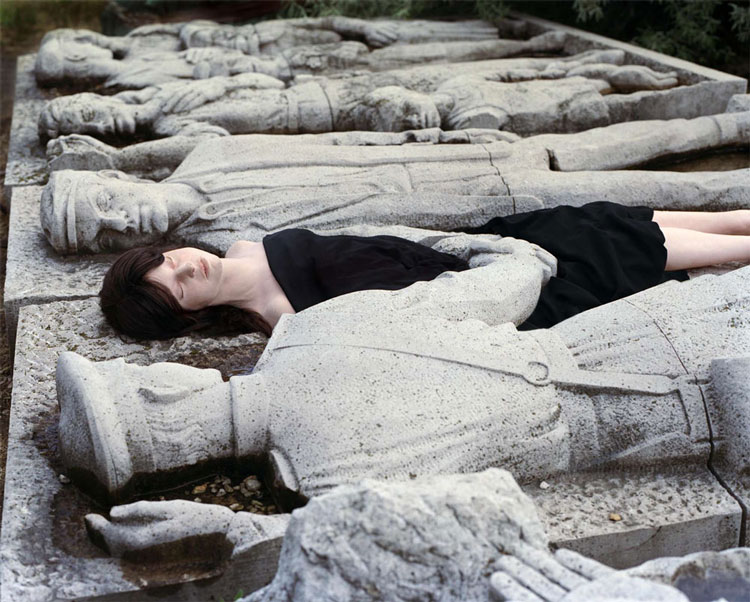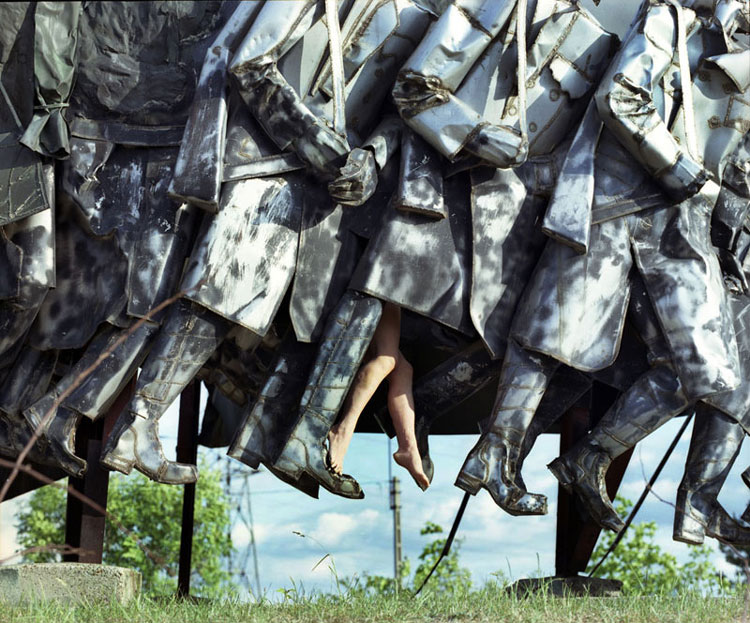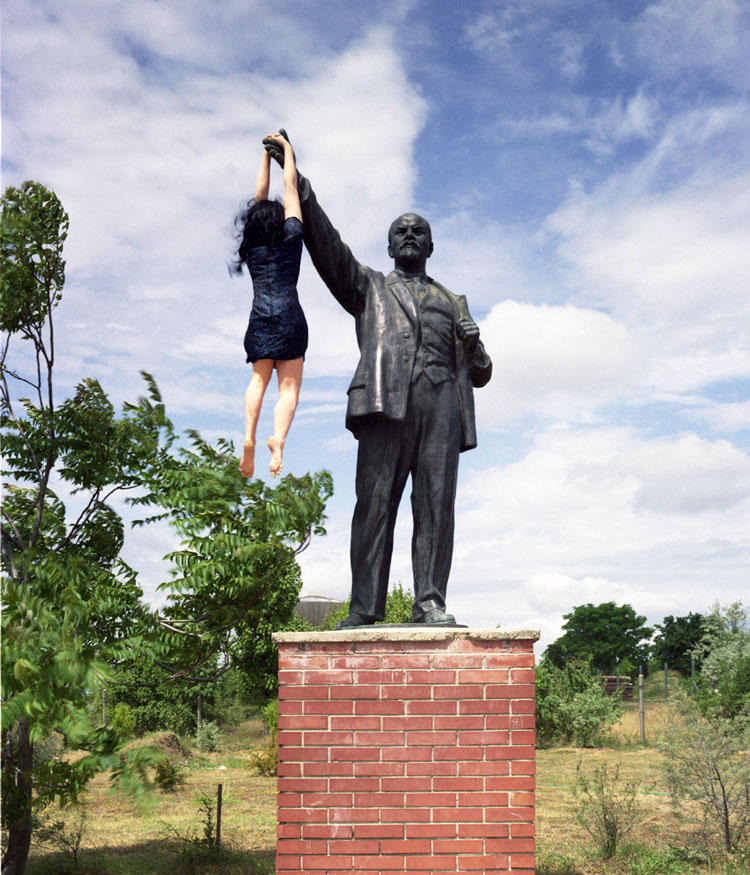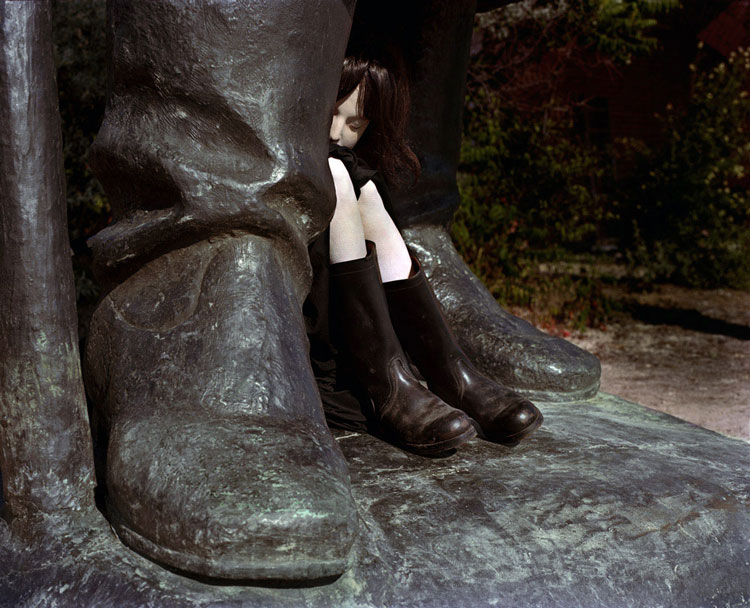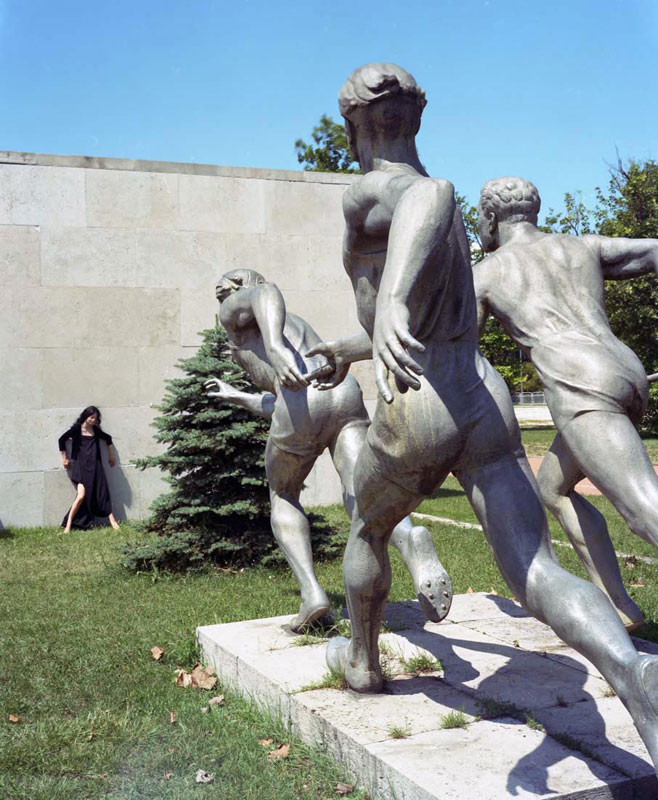Liane Lang "Monumental Misconceptions" |
"Close quarters"
|
"Fellow Travelers"
|
"Grand Gesture"
|
"Bossy Boots"
|
"Runners"
|
Liane Lang's ongoing project Monumental Misconceptions includes photographic works made during her residency at the Memento Sculpture Park in Budapest (the resting place of discarded and exiled monumental sculptural works from the socialist era in Hungary) and a new series of sculptures that take as their subject defaced and destroyed monuments to dictators and deposed leaders – the sculptures themselves derive from documentation of these acts of symbolic violence: from the black and white footage of the Czar's statue being torn down by horse-power in Eisenstein's 1928 film October, to contemporary footage of a different kind of horsepower at work on the iconic statue of Saddam Hussein in 2003. The selection of these sculptures carries a subtext: The monumental statues of feudalism, the Prussian emperor on horseback, the mighty tzar on his throne, the eminent statue of Bismarck, were all deposed and melted down by Socialists. Their bronze may well have gone into the production of Lenin, Stalin and Dherzhinsky in the following years. The seeming permanence of the bronze statue is belied by its precarious existence, as historically only a small number survive this form of ideological recycling. Throughout Lang's work there is a fascination with the contextual and historical influence on the way we perceive the figure in sculpture. The artist is interested in the idea of the sculptural object that has forfeited its role to be treated and seen as an artwork. The sculpted figure can lose its status as artwork in many ways, ideological, political or aesthetic. It may do so through excessive life-likeness, ranging from the marble carving down to the tawdry side-show reputation of the wax work. The Socialist statues, many made with great skill by important sculptors of the time, became culpable by association and lost their status as artwork in this way. Central to this series is the notion of iconoclasm, a theme, which emerges in much of Lang's work. Here, the statue becomes the object of bodily punishment, being treated as a symbolic site for physical humiliation, injury and execution in lieu of the real body. The symbolic act of deposition is often more powerful and long lasting than the fate of the person portrayed. The works, both sculptural and photographic, address the role of scale in our perception of art. In the case of monumental sculpture the sense of subjective appreciation or interpretation is determinedly overridden by the artist – the work has a distinct purpose and employs tried-and-tested mechanisms in its approach to materials and scale to achieve its function – to depict the subject as heroic; all-powerful; By tweaking one of these vital mechanisms – scale – Lang is able to create space for a much broader range of interpretations. The statuesque subjects of her works are variously belittled (in their reduction to sculptural miniatures) or revealed as grotesques as Lang introduces her life-size simulacra to them, highlighting the absurdity of their heroic poses. The resulting original works thus retain the echo of the appropriated sculpture's polemic message, but create room around them for humour and a strange and haunting beauty, born of empathy – for the mighty (however tyrannical) brought low, and for the very human condition of impermanence. |

